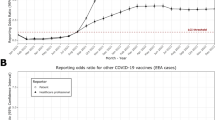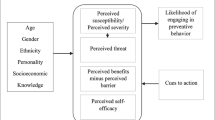Abstract
In October 1990, a recall procedure was initiated for the teratogenic drug acitretin, and the recommended post-therapy contraception period after acitretin therapy was extended from 2 months to 2 years due to the possibility of its conversion to the lipophilic compound etretinate. The aim of the present study was to evaluate the communication procedures and their effects as a drug alert from the health authorities, the pharmaceutical company and professional associations of health professionals to the population at risk.
A model was used to evaluate communication between three hierarchical levels. Data were obtained via semi-structured interviews and structured questionnaires. Communication procedures were evaluated according to channel characteristics and by analysis of their contents. The effect was measured as whether the drug dispensers identified acitretin users, contacted physicians, and whether physicians communicated in person with the population at risk.
The penetration of direct mail from the health authorities and from the pharmaceutical company ranged from 97–98% and 65–94% at Level 2 (health professionals). The population at risk was informed via personal communication with health professionals, and/or the mass media. Of the women at risk, 19% were contacted by a dermatologist, 30% by their GP, and 39% by the pharmacist. 35% was never informed by any health professional.
The Dutch health care system is adequately equipped for effective communication between health authorities, pharmaceutical industry and health professionals. Due to problems with identification in terms of past exposure, subsequent personal communication between health professionals and the population at risk was inadequate. Therefore, the role in personal communication of health professionals should be increased, as they can rapidly identify persons at risk as a result of previous exposure. In The Netherlands drug dispensers should have an important role.
Similar content being viewed by others
References
Kragballe K, Jansen CT, Geiger LMW, Bjerke JR, Falk ES et al (1989) A double blind comparison of acitretin and etretinate in the treatment of severe psoriasis. Acta Derm Venereol (Stockh) 69:35–40
DiGiovanni JJ, Zech LA, Ruddel HE, Gantt G, Peck GJ (1989) Etretinate, persistent levels after long term therapy. Arch Dermatol 125:246–251
Howard WB, Willhite CC (1986) Toxicology of retinoids in humans and animals. J Toxicol Toxin Rev 5:55–96
Berlo DK (1960) The process of communication:an introduction to theory and practice. Holt, Rinehart Winston, New York
Stricker BHC, Barendregt M, Herings RMC, De Jong-van den Berg LTW, Cornel MC, De Smet PAGM (1992) Ad hoc tracing of a cohort of patients exposed to acitretin (Neotigason) on a nation-wide scale. Eur J Clin Pharmacol 42:555–557
Sturkenboom MCJM, Stricker BHCh, De Jong-van den Berg LTW, Cornel MC, Wesseling H (1992) Post marketing surveillance and the approach of the individual patient- a significant contribution of pharmacists. Pharm Weekbl Sci 14:G6
Wapenaar H, Röling NHG, Van den Ban AW (1989) Basics of information skills. [Basisboekvoorlichtingskunde] Boom, Meppel
Berelson B (1952) Content analysis in communication research. Free Press, Glencoe, Ill
McQuail D (1991) Mass communication theory: an introduction, 2nd edn. Sage, London
Sturkenboom MCJM, De Jong-van den Berg LTW, Cornel MC, Stricker BHC, Wesseling H (1993) A drug alert [Alarm rond een geneesmiddel]. Research report RUG, Groningen
Kaiser A (1990) A world of paper [Een wereld van papier; werkwijze en uiterlijk van de Nederlandse krant] In: Bardoes J, Bierhoff J (eds) Media in the Netherlands, 6th edn. Wolters Noordhof, Groningen
Kimble KH (1993) Thirty years after thalidomide: still plenty to do. Int J Risk Safety Med 4:1–12
VanAmerongen CA (1992) Better an orange hand than a red face [Beter een oranje hand dan een rood hoofd (II)] Pharm Weekbl 127:153
Carocci NM (1985) Diffusion of information about cyanidelaced Tylenol. Journalism Quarterly 62: 630–633
Soumerai SB, Avorn J, Gortmaker S, Hawley S (1987) Effect of government and commercial warnings on reducing prescription misuse: the case of propoxyphene. Am J Public Health 77:1518–1523
Author information
Authors and Affiliations
Rights and permissions
About this article
Cite this article
Sturkenboom, M.C.J.M., de Jong-van den Berg, L.T.W., Cornel, M.C. et al. Communicating a drug alert. Eur J Clin Pharmacol 47, 125–132 (1994). https://doi.org/10.1007/BF00194961
Received:
Accepted:
Issue Date:
DOI: https://doi.org/10.1007/BF00194961




